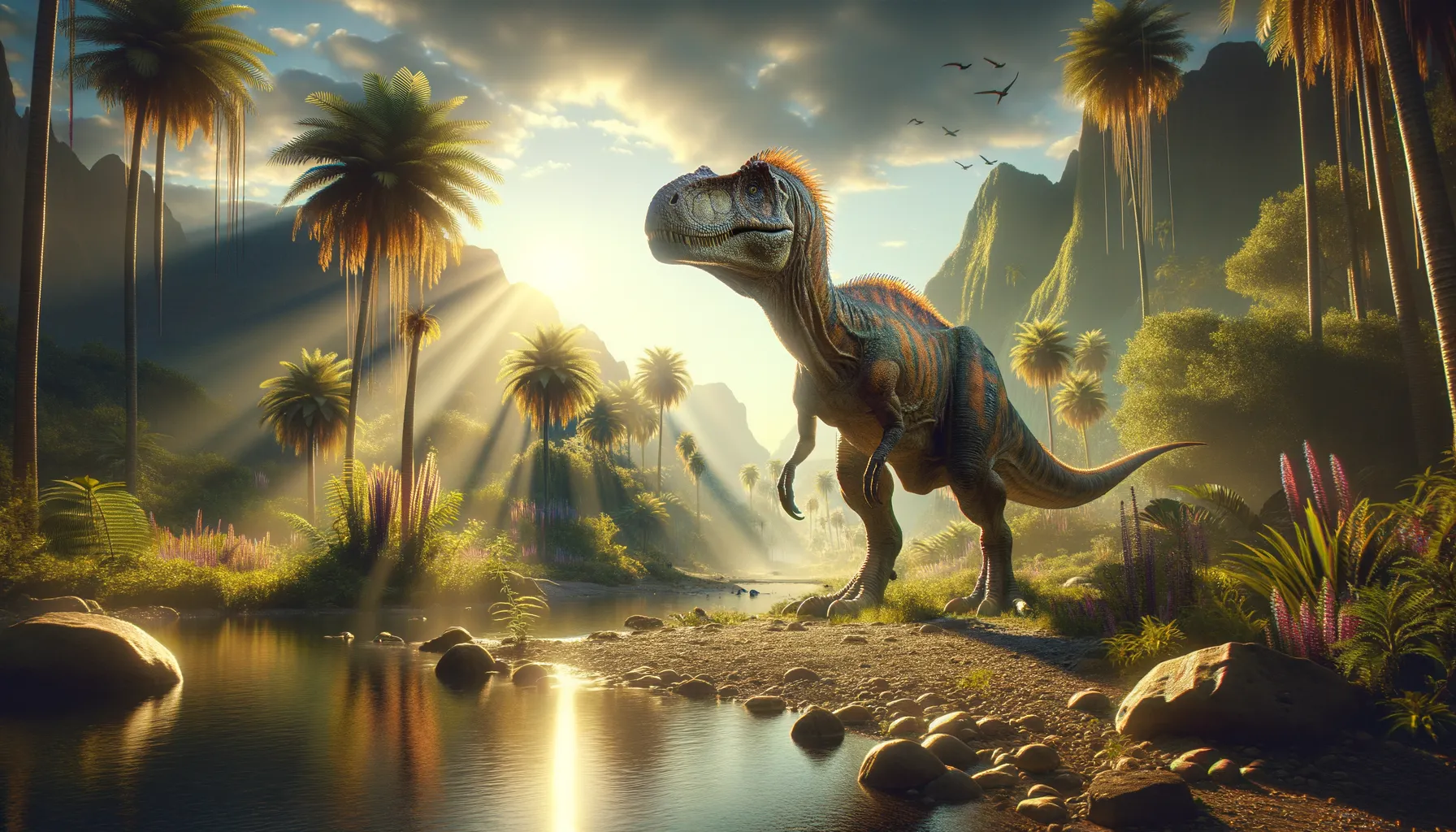
Kemkemia
Exploring the shadows of Africa's Cretaceous titans.
Period
Cretaceous
Length
Estimated to be around 3 to 4 meters long.
Height
Roughly estimated to be around 1 to 2 meters tall.
Weight
Estimates are limited; possibly a few hundred kilograms.
Kemkemia is a lesser-known theropod dinosaur believed to have roamed what is today Morocco during the Cretaceous period. Its discovery was primarily based on a few fossil vertebrae, which provide limited information about its full appearance and behavior. The genus highlights the diversity of predatory dinosaurs that lived in northern Africa, coexisting in what would have been a lush environment teeming with life.
Diet
Kemkemia is thought to have been a carnivore. Its diet likely consisted of smaller dinosaurs, fish, and perhaps carrion. This assumption is based on its classification as a theropod, a group known for meat-eating habits.
Hunting
Without complete fossil evidence, the hunting strategies of Kemkemia remain speculative. If it followed patterns seen in other theropods, it might have relied on speed and agility. Potentially, it could have hunted alone or in small packs to outmaneuver prey.
Environmental challenges
During the Cretaceous, the area now known as Africa experienced fluctuating climates, alternating between wetter and drier periods, which impacted available food resources and habitats. Large predators often compete for the same prey, so Kemkemia might have faced challenges in maintaining its position in the food chain. Shifts in the surrounding environments required adaptability, influencing its survival strategies.
Speed
Unknown due to limited fossil evidence.
Lifespan
Not conclusively determined from current findings.
First discovery
First discovered in Morocco in 1999.
Fun Facts
- Kemkemia is a dinosaur that was found in the Kem Kem Beds of Morocco, which is why it has such a unique name!
- It is believed to have lived during the Late Cretaceous period, roughly 100 million years ago.
- Kemkemia was a theropod, a group of dinosaurs that also includes the famous T. rex and modern-day birds.
- The fossils of Kemkemia are quite rare, and only a few bones have been found, making it a bit of a mystery to paleontologists.
- Kemkemia shared its prehistoric environment with a variety of other fascinating creatures, including large crocodiles and other dinosaur species.
- The region where Kemkemia was discovered, the Kem Kem Beds, is known for being rich in fossils and has provided many insights into the Cretaceous period.
Growth and Development
Due to limited fossil evidence, specific insights into the growth and development of Kemkemia remain unclear. It's plausible that, like other theropods, it underwent rapid growth phases during juvenile stages. Development likely involved changes in physical and behavioral characteristics as it matured to maximize its survival chances in a predatory niche.
Habitat
Kemkemia lived in a region that was a tropical wetland environment during the Cretaceous, rich in rivers and greenery. This habitat supported a complex ecosystem with diverse flora and fauna, offering ample opportunities for carnivorous dinosaurs to thrive. The area's fluctuations in water levels and vegetation density played a significant role in shaping the habits of its inhabitants.
Interaction with other species
Kemkemia coexisted with other large predators, meaning competition for similar dietary niches. Its interactions might have included competitive displays or direct confrontations over territory and resources. Fossils suggest a diverse ecosystem, indicating potential interactions with both predatory and herbivorous dinosaurs.
Natural lifespan
Life expectancy largely remains a mystery due to scarce fossil records.
Reproduction
As with many dinosaurs, Kemkemia likely laid eggs, a trait shared typically among theropods. Nesting habits and parental care strategies remain speculative due to a lack of fossilized evidence. Incubation periods and the care post-hatching would have followed the vulnerability of young creatures in such ecosystems.
Social behaviour
While specific social behaviors are not documented, Kemkemia might have demonstrated behaviors similar to other theropods, which could include pack hunting or solitary living based on the available prey and competition. Social structures, if present, would have been adapted to improve survival.
Fossil locations
Kemkemia fossils have primarily been found in the Kem Kem Beds of Morocco. These formations are known for their rich fossil deposits from the mid-Cretaceous period. While fossils remain rare, they provide crucial insights into Cretaceous-era life in Africa.
